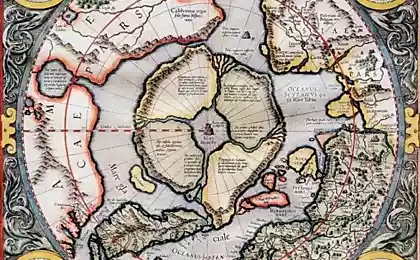393
How many live in a technological civilization

"We don't have the slightest idea on how many can exist technological civilization like ours, says astrophysicist at the University of Rochester Adam Frank. — 200, 500, or 50,000 years? The answer to this question lies at the heart of all our concerns about the sustainability of human society. Are we the first and only technologically-oriented civilization in the entire history of the Universe? If not, should we try to learn something about the past UPS and downs of other species?".
Climate change caused by human intervention, acidification of the oceans and the extinction of a species can ultimately lead to the collapse of civilization, according to some scientists, while others argue that for political or economic reasons we should allow industry to develop without restrictions. In the last two astrophysics claim that these questions may soon be resolvable scientifically, thanks to new data about the Earth and other planets in our galaxy.
In the work, which appeared in late 2014 in the journal Anthropocene, Frank and co-author Woodruff Sullivan call for creation of a new research program that helps answer questions about the future of humanity in the broadest astronomical context. Says the author, "to take a look at our current situation, it is necessary in some sense to define a natural evolutionary path."
To approach these questions, Frank and Sullivan begin with the famous Drake equation, the formula used to estimate the number of intelligent societies in the Universe. In his equation, the authors focused on the average duration of a "species with energy-intensive technologies" (SWEIT). Frank and Sullivan calculate that even if the chances of forming such a "high tech" species are 1 in a trillion in history must be at least 1000 occurrences of species such as ours, on planets in the "local" region of space.
"This is enough to start thinking about statistics, says Frank, for example, about the average lifespan of the species, who develop efficient energy production and use it to develop high technologies".
Using the theory of dynamical systems, the authors outlined a strategy for modeling the trajectories of various SWEIT in the process of evolution. They show how the path of development can be closely linked to the interaction of the species and its planet. As the population grows and energy consumption also, the composition of the planet and its atmosphere may change on long time frames.
Frank and Sullivan show that the study of habitability of exoplanets would provide important lessons to maintain the civilization that we have developed on Earth. This "astrobiological perspective" portrays the stability as a dependent designated subset of habitability, or the ability of the planet to sustain life. Although sustainability is associated with a specific form of life on each specific planet, astrobiologists raise a more important question is: how to define it for any life form on any planet in any given period of time?
We don't know how to compare other possible forms of life with those that we know on Earth. But to determine the average time of their existence, according to Frank, it is not necessary.
"If they use energy, they produce entropy. It does not matter whether they are anthropomorphic creatures from the "Star trek" with antennae on their heads or single-celled organisms with a collective overmind. Entropy in this case will create such a powerful impact on the habitability of the planet that we will notice this even on Earth."
Source: hi-news.ru























